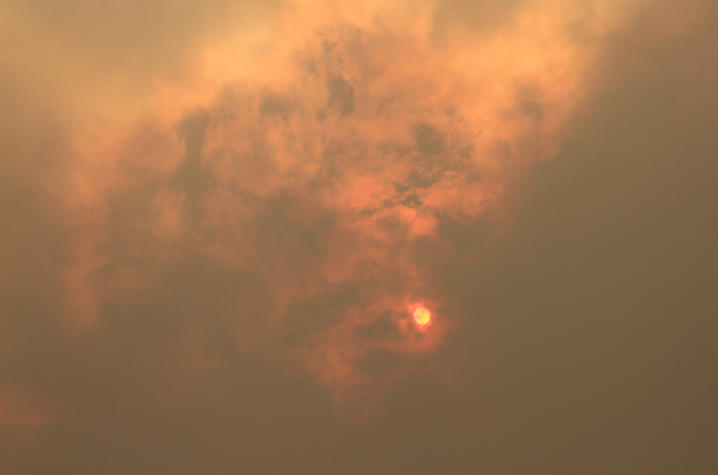NSF grant propels UK chemist’s research on air pollution

LEXINGTON, Ky. (Oct. 10, 2024) — A team of chemists from the University of Kentucky will advance their research on how air pollution from wildfire and combustion emissions affect the environment thanks to a grant from the U.S. National Science Foundation (NSF).
Marcelo Guzman, Ph.D., professor in the Department of Chemistry in the College of Arts and Sciences, a Lewis Honors College faculty fellow and lead chemist in the Environmental Chemistry Laboratory, is the principal investigator of the nearly $571,000 grant.
This three-year laboratory study focuses on the chemical interactions of pollutants at the interface of atmospheric particles, an issue at the forefront of atmospheric chemistry research.
The work builds on previous research by Guzman and his team addressing how chemicals in atmosphere smoke react after large fires. His lab was among the first to study these chemical reactions at night and now is addressing the role of sunlight-driven reactions.
For example, in the paper “Photocatalysis of Adsorbed Catechol on Degussa P25 TiO2 at the Air–Solid Interface” published in The Journal of Physical Chemistry C, Guzman and his research team demonstrated how photoinduced reactions proceed through a novel mechanism with a ligand-to-metal charge-transfer (LMCT) transition.
“With this project, we want to uncover how sunlight transforms pollutants such as catechol on these surfaces. Catechols serve as a precursor in the formation of compounds found in widespread atmospheric brown carbon, which absorbs sunlight and directly affects the atmosphere’s radiation properties,” said Guzman.
Researchers will study how specific light-absorbing molecules can create other highly reactive oxygen-containing molecules. Those can help break down pollutants more effectively on the surfaces of atmospheric particles.
“The goal is to not only understand how these reactions occur, but how they can contribute to cleaning or transforming pollutants in the atmosphere,” said Guzman. “We also want to be aware of how those changes affect our air quality, the climate and public health.”
To achieve that understanding, the team of chemists want to develop new experimental methods and use various techniques like spectroscopy, chromatography and mass spectrometry to examine surface reactions under realistic sunlight and humidity conditions.
Research reported in this publication was supported by the U.S. National Science Foundation under Award Number 2403875. The opinions, findings, and conclusions or recommendations expressed are those of the author(s) and do not necessarily reflect the views of the U.S. National Science Foundation.
As the state’s flagship, land-grant institution, the University of Kentucky exists to advance the Commonwealth. We do that by preparing the next generation of leaders — placing students at the heart of everything we do — and transforming the lives of Kentuckians through education, research and creative work, service and health care. We pride ourselves on being a catalyst for breakthroughs and a force for healing, a place where ingenuity unfolds. It's all made possible by our people — visionaries, disruptors and pioneers — who make up 200 academic programs, a $476.5 million research and development enterprise and a world-class medical center, all on one campus.




